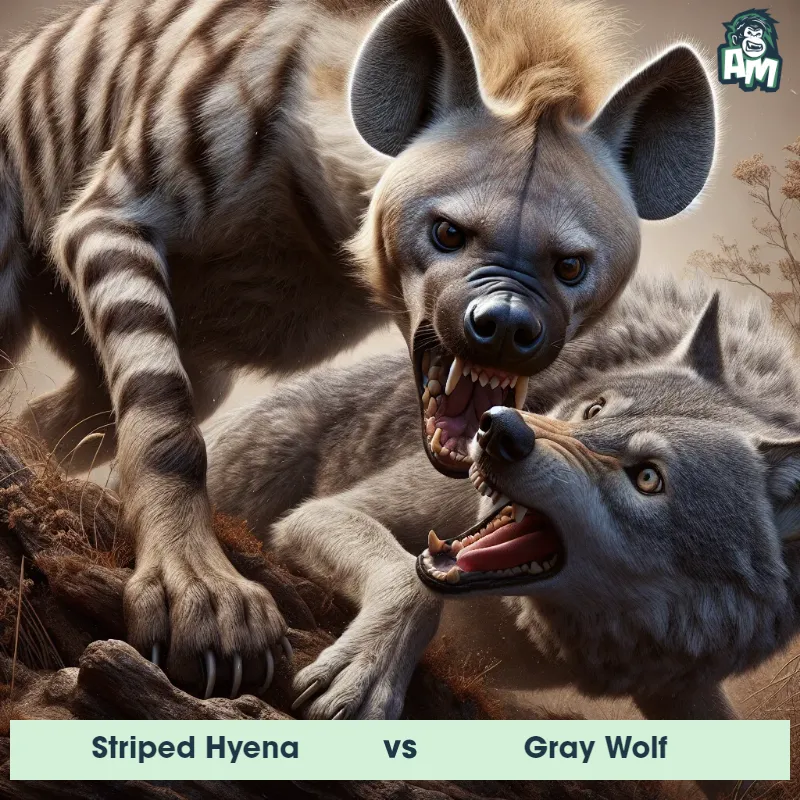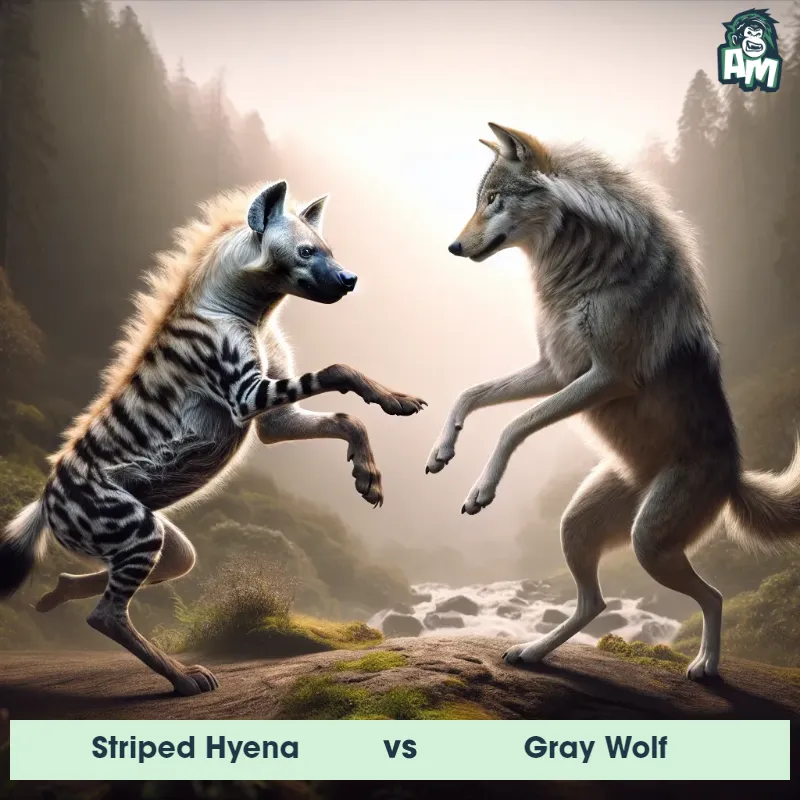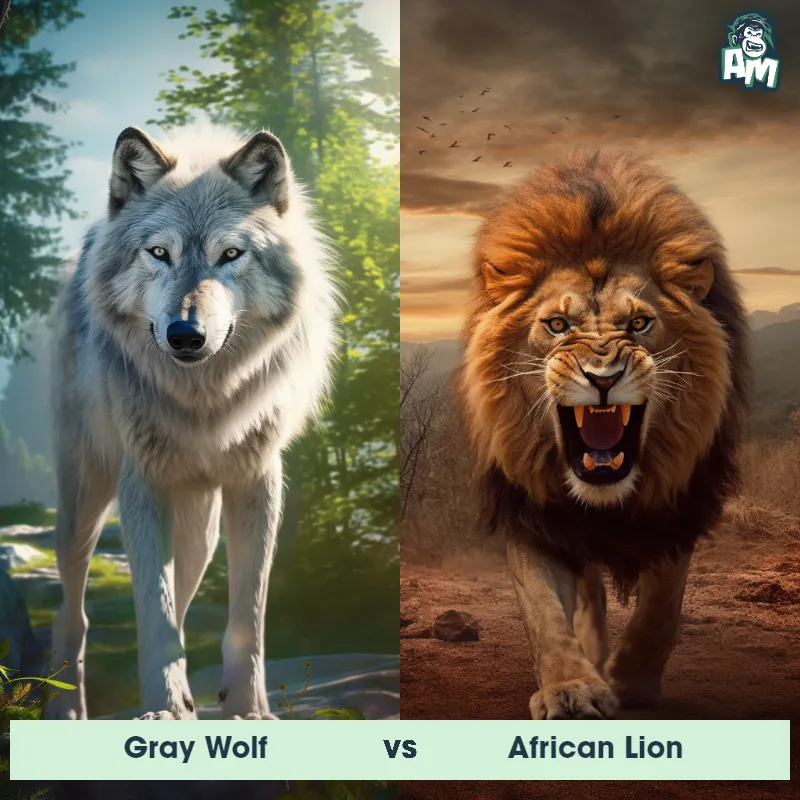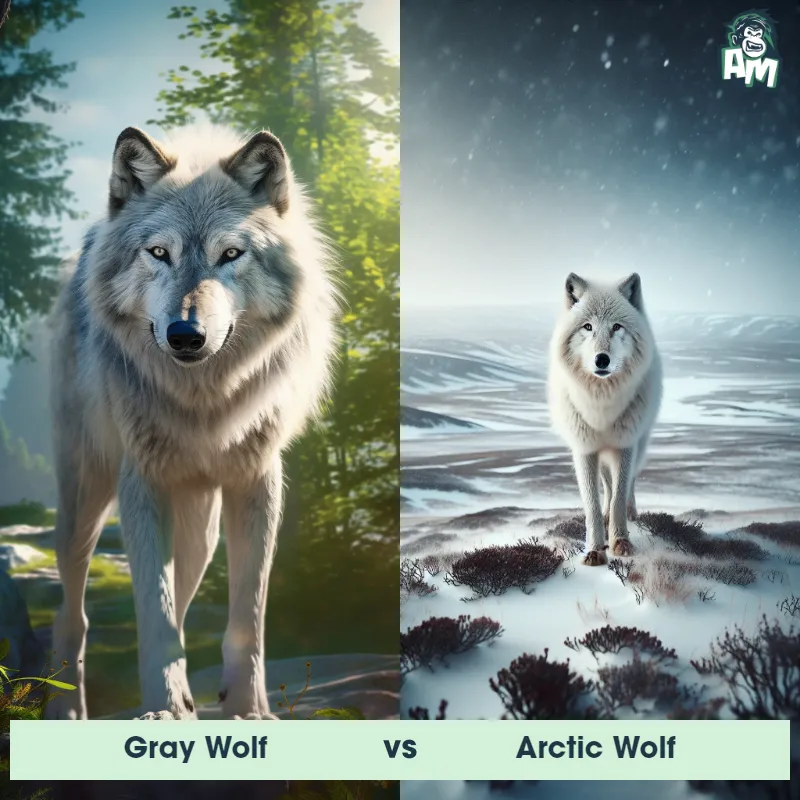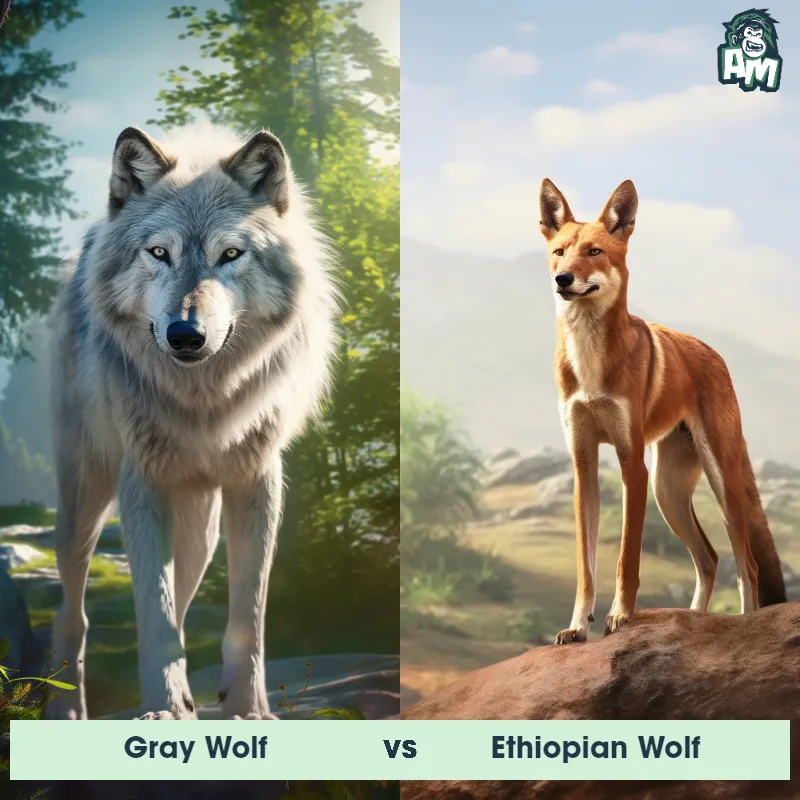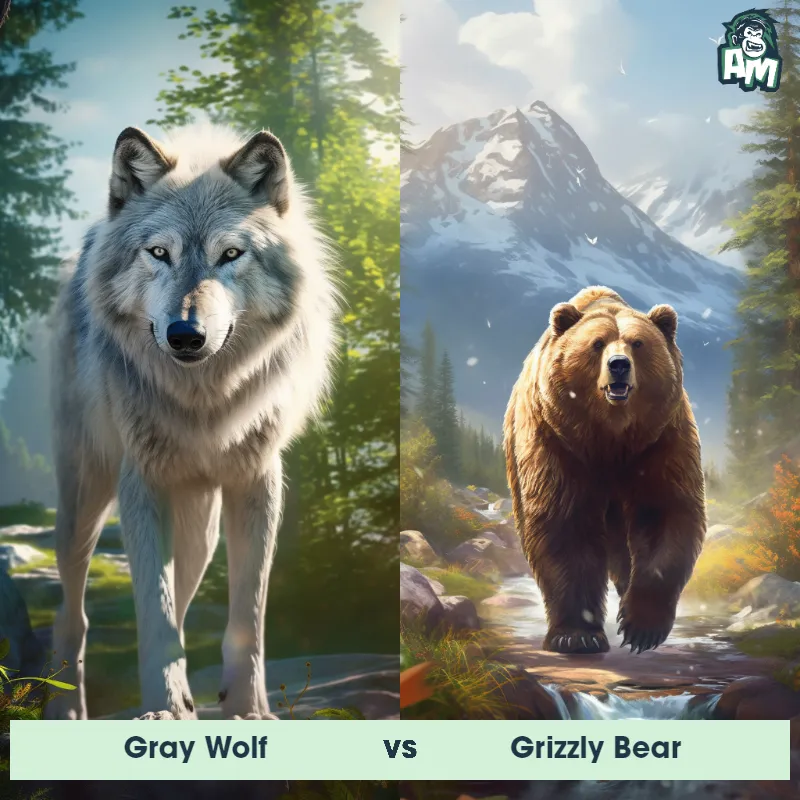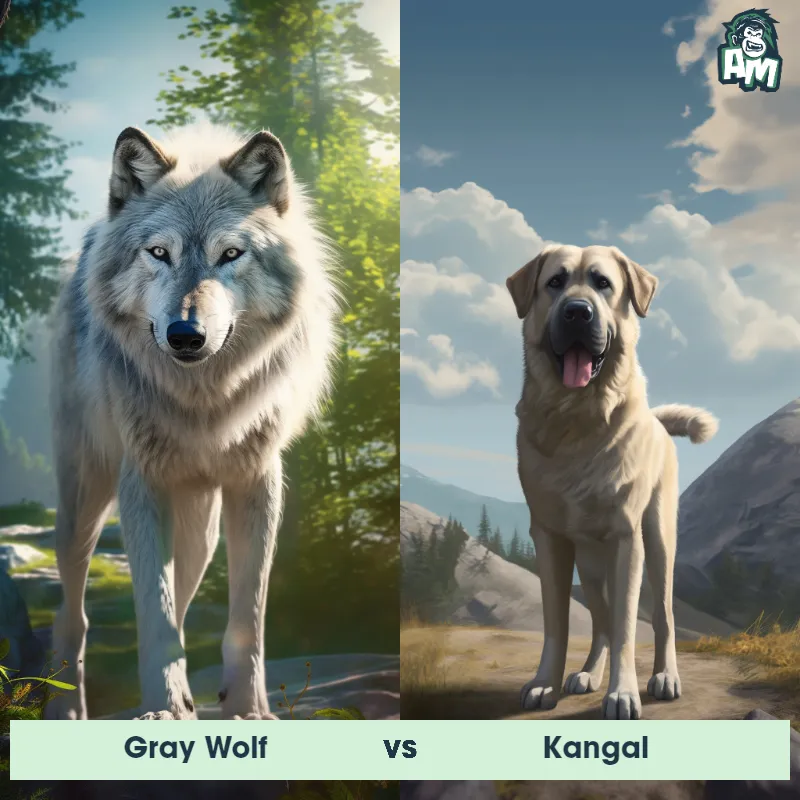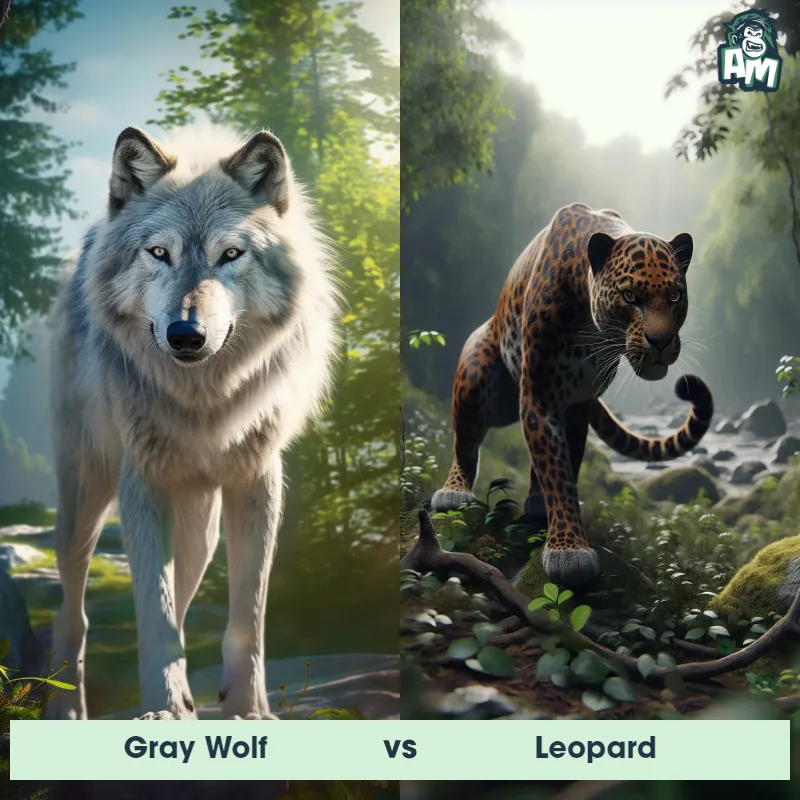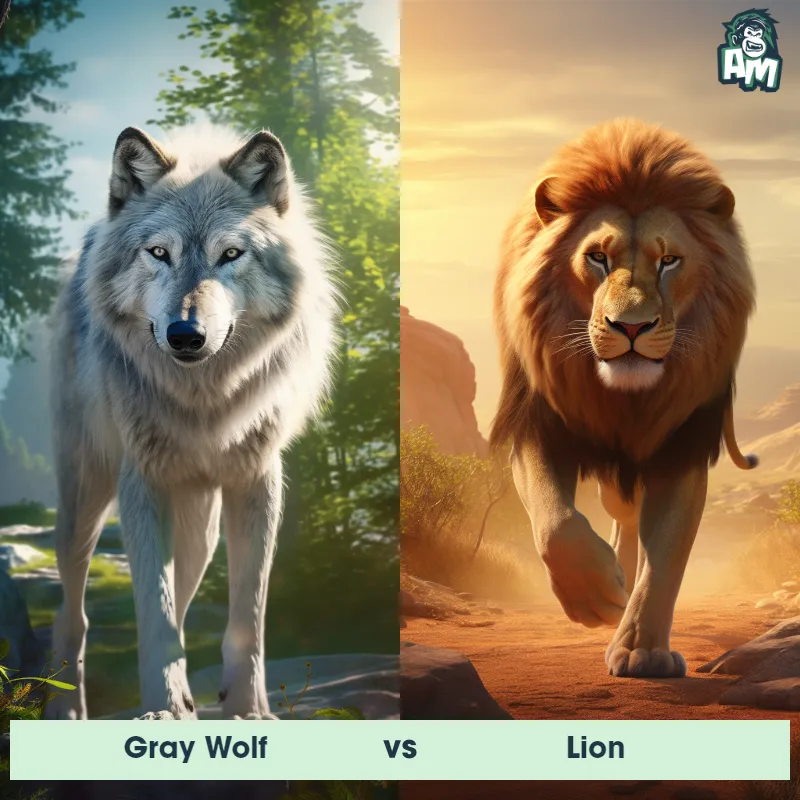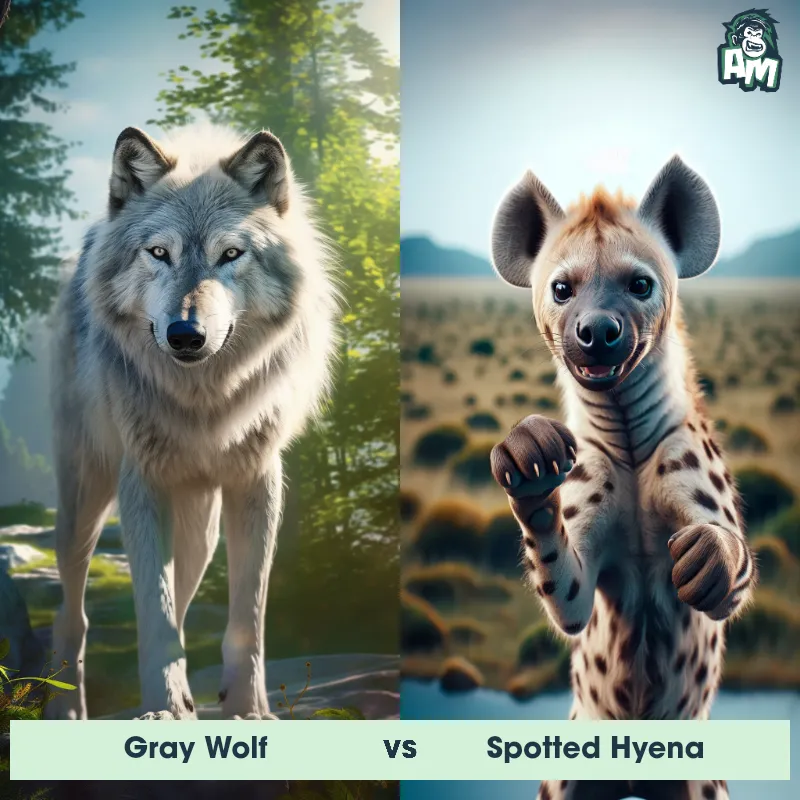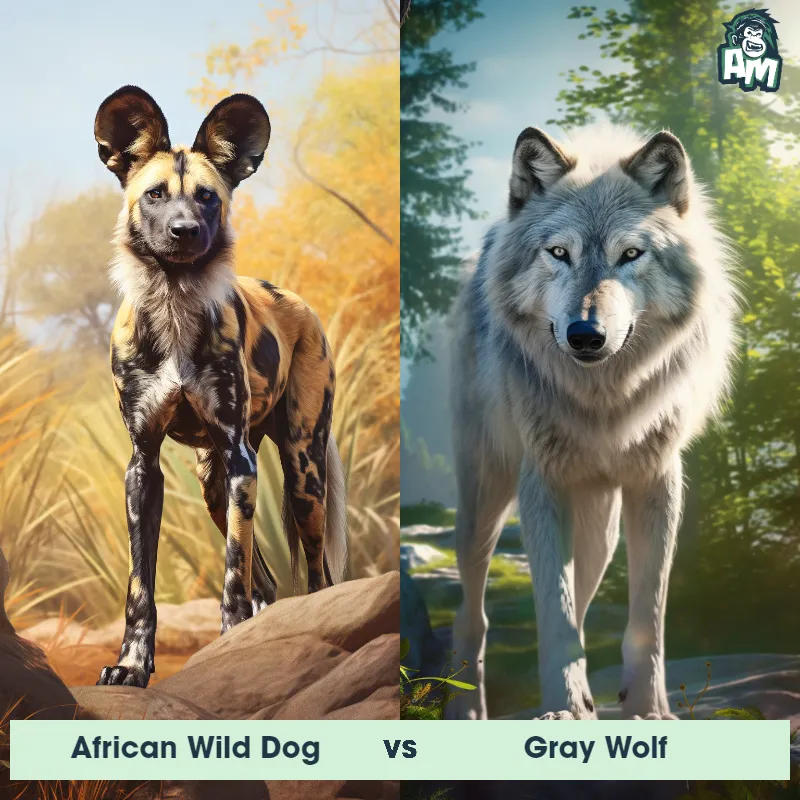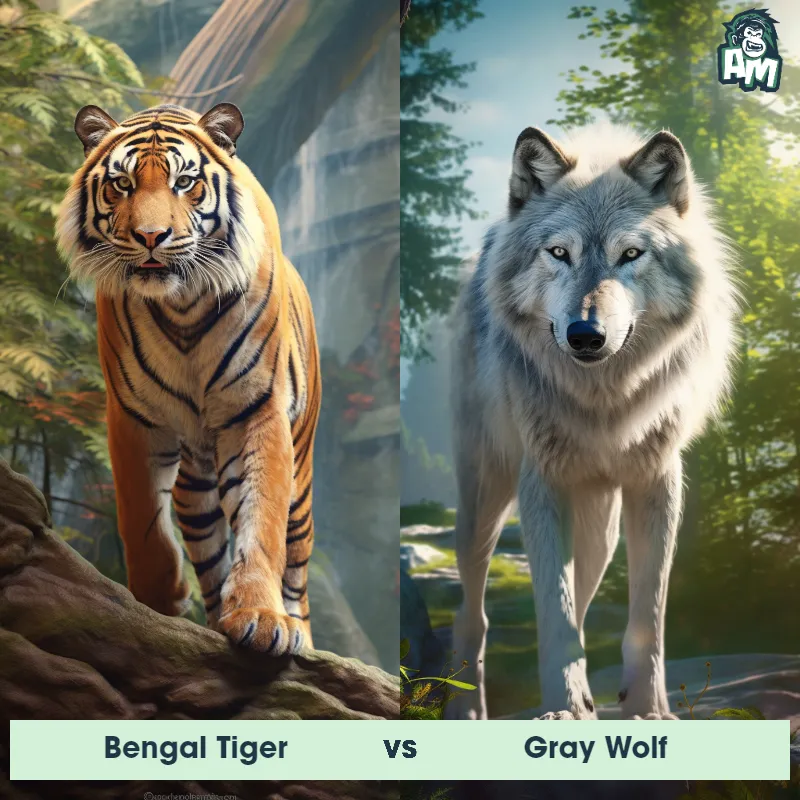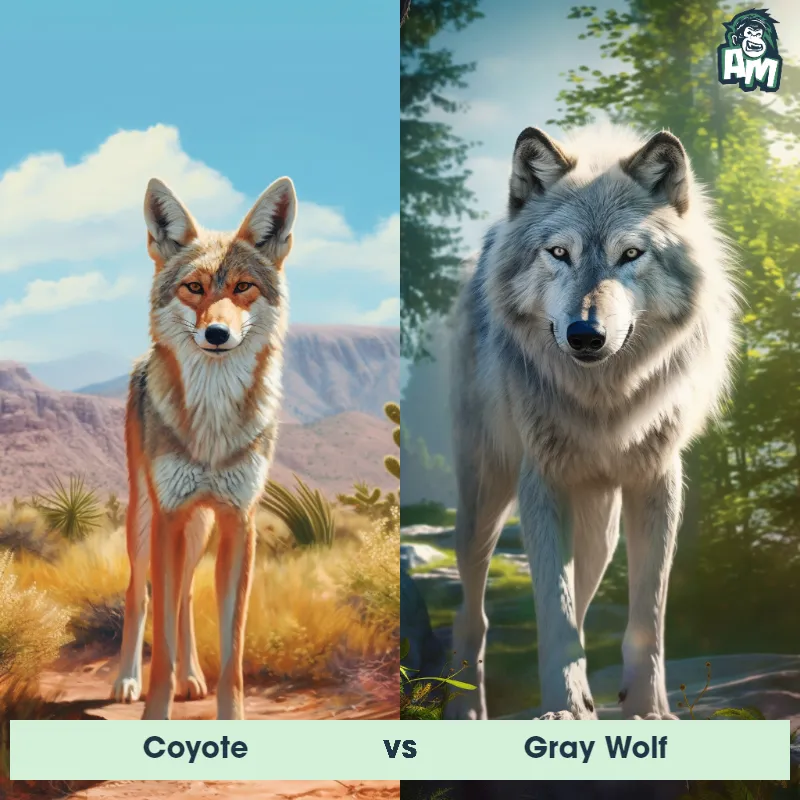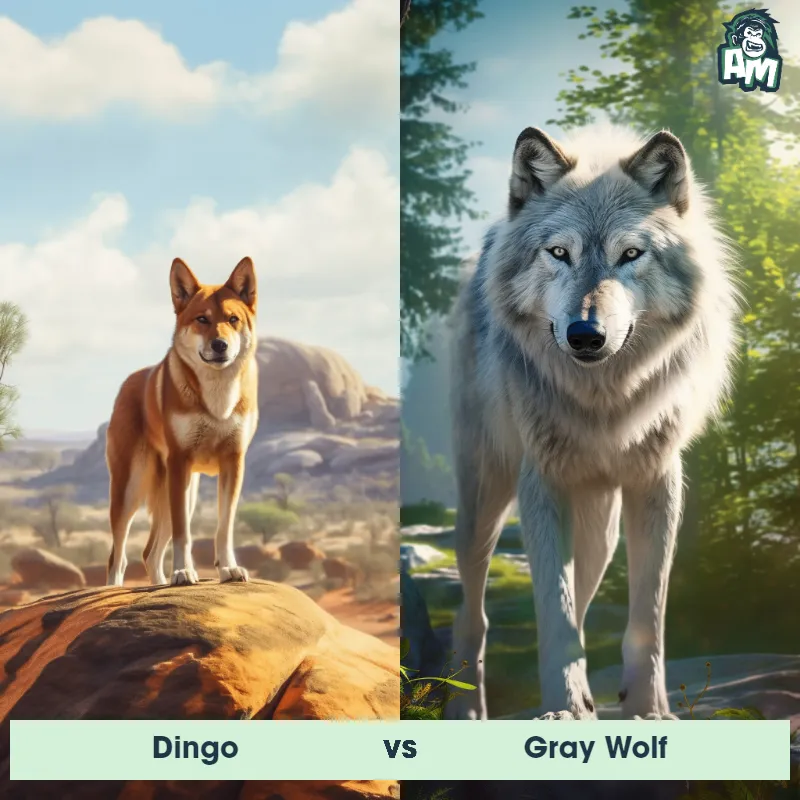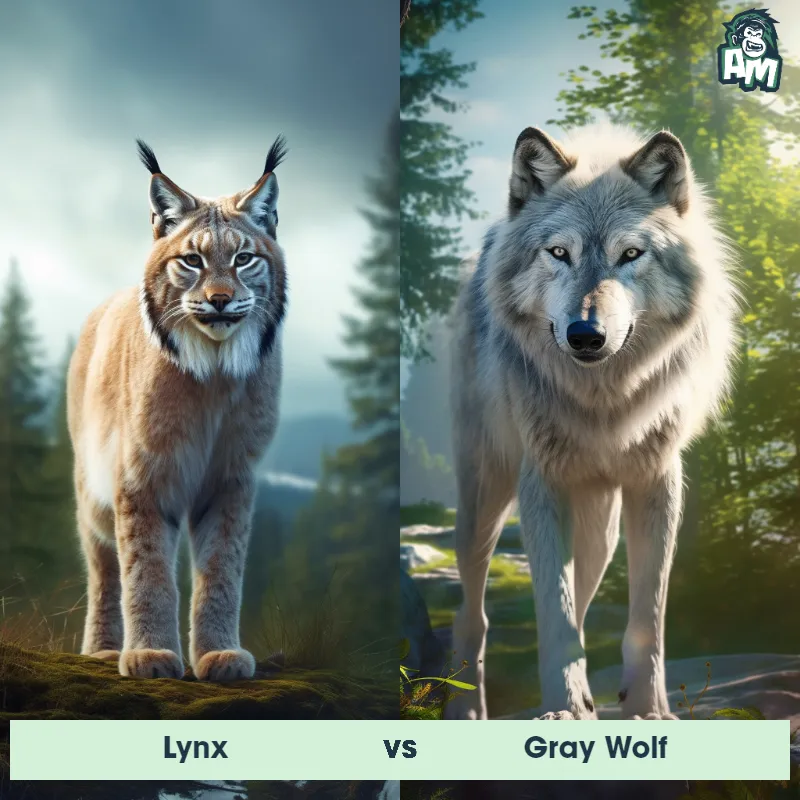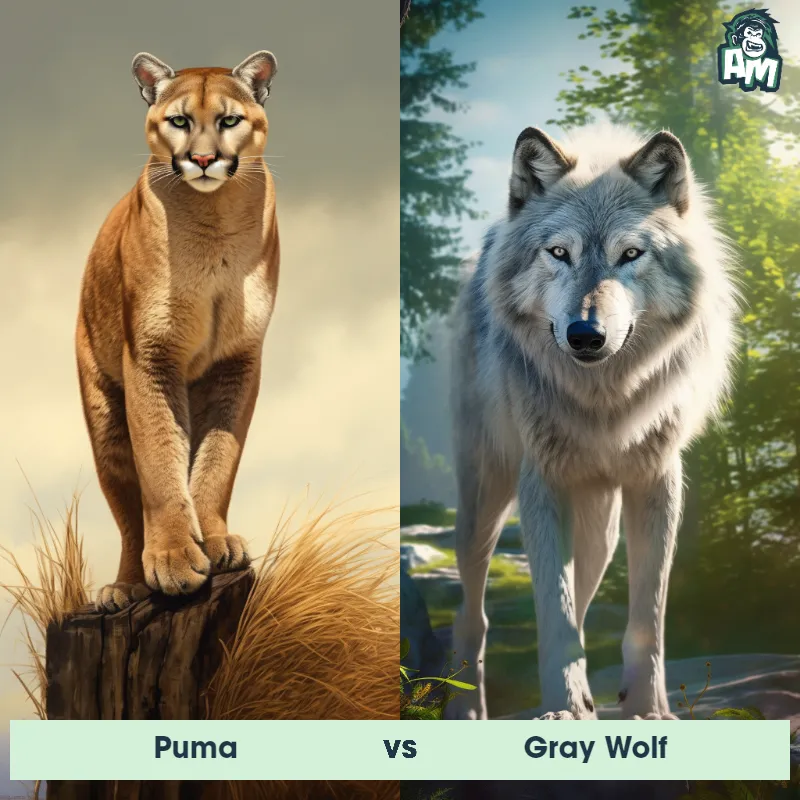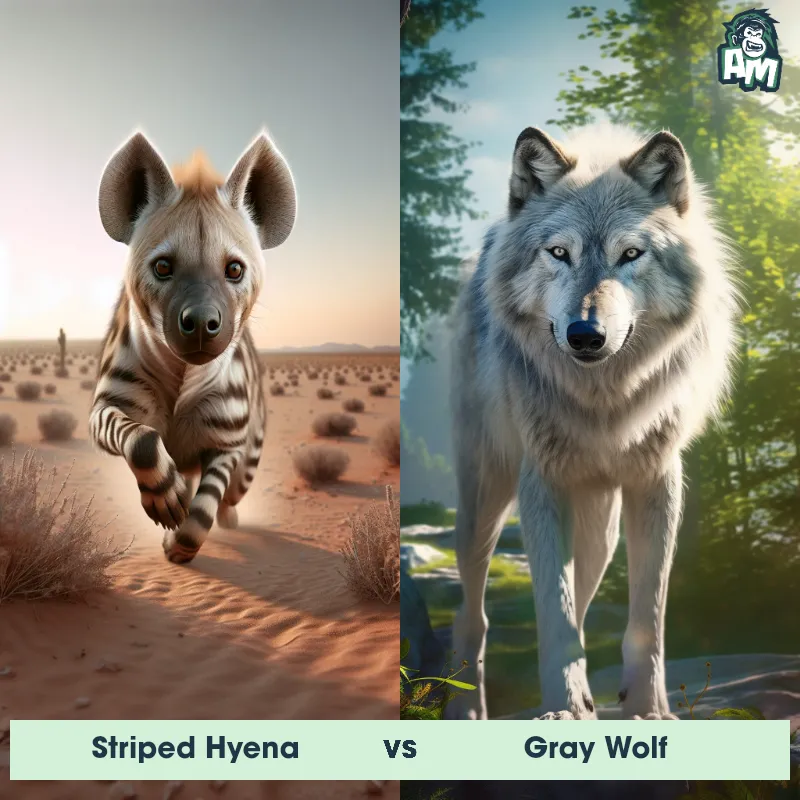The Gray Wolf
The Gray Wolf, also known as the timber wolf or western wolf, is a large carnivorous mammal that belongs to the Canidae family. They are highly social animals that live in packs, which usually consist of a dominant alpha pair and their offspring. Gray wolves have a thick and dense coat of fur that varies in color, ranging from gray to black, brown, and even white in certain areas. They have strong jaws, sharp teeth, and keen senses, including excellent eyesight, acute hearing, and a keen sense of smell. Known for their adaptability, agility, and endurance, these majestic creatures are skilled hunters and are capable of covering long distances during their search for prey.
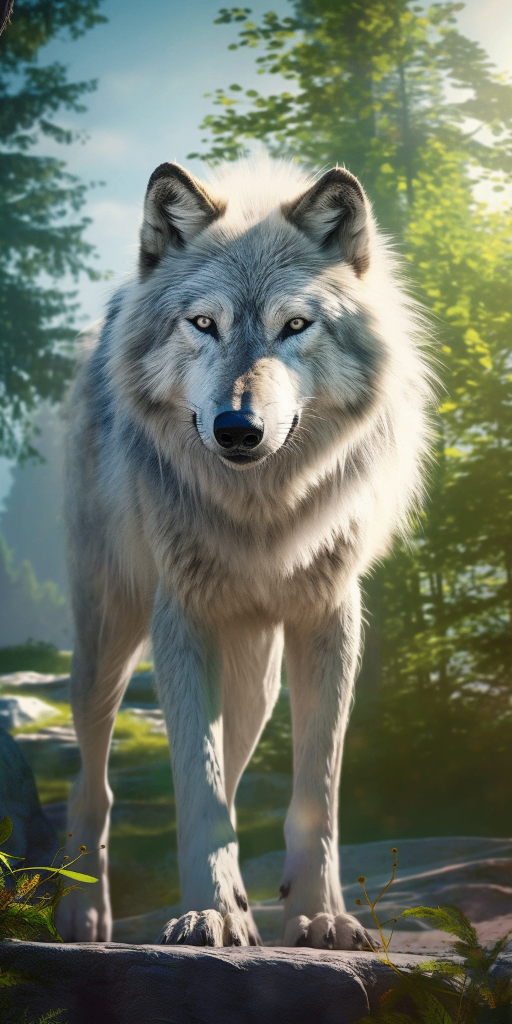
| Gray Wolf | |
|---|---|
| Size | 2-3 feet (0.6-0.9 meters) at the shoulder |
| Weight | 70-110 pounds (32-50 kilograms) |
| Speed | Speed: 40 mph (64.37 km/hr) |
| Key Strength | Powerful jaws and sharp teeth |
| Biggest Weakness | Vulnerable to attacks on the neck and throat |
| Scientific Name | Canis lupus |
| Family | Canidae |
| Habitat | Forests, grasslands, tundra, and deserts |
| Geography | North America, Eurasia, and parts of Africa |
| Diet | Carnivorous, primarily feeding on large ungulates such as elk and bison |
| Lifespan | 6 years - 13 years |

The Gray Wolf
The Gray Wolf, also known as the timber wolf or western wolf, is a large carnivorous mammal that belongs to the Canidae family. They are highly social animals that live in packs, which usually consist of a dominant alpha pair and their offspring. Gray wolves have a thick and dense coat of fur that varies in color, ranging from gray to black, brown, and even white in certain areas. They have strong jaws, sharp teeth, and keen senses, including excellent eyesight, acute hearing, and a keen sense of smell. Known for their adaptability, agility, and endurance, these majestic creatures are skilled hunters and are capable of covering long distances during their search for prey.
Fun Fact: Gray wolves communicate using a variety of vocalizations, including howls, barks, growls, and whines. Their iconic howling serves multiple purposes, such as maintaining communication within the pack, defining territorial boundaries, attracting potential mates, and coordinating group activities such as hunting.
| Gray Wolf | |
|---|---|
| Size | 2-3 feet (0.6-0.9 meters) at the shoulder |
| Weight | 70-110 pounds (32-50 kilograms) |
| Speed | Speed: 40 mph (64.37 km/hr) |
| Key Strength | Powerful jaws and sharp teeth |
| Biggest Weakness | Vulnerable to attacks on the neck and throat |
| Scientific Name | Canis lupus |
| Family | Canidae |
| Habitat | Forests, grasslands, tundra, and deserts |
| Geography | North America, Eurasia, and parts of Africa |
| Diet | Carnivorous, primarily feeding on large ungulates such as elk and bison |
| Lifespan | 6 years - 13 years |
Match Highlights
Gray Wolf Matchups
We use AI to simulate matchups between the Gray Wolf and other animals. Our simulation considers size, strength, and natural predatory behaviors to determine the most likely outcome.

Can't find the Matchup you want?
Create Your Own MatchupGray Wolf: Diet, Predators, Aggression, and Defensive Behaviors
What do Gray Wolves eat?
Gray Wolves are carnivorous predators and primarily feed on large ungulates such as deer, elk, and moose. They may also consume smaller mammals like beavers, rabbits, and rodents. In times of scarcity, they are opportunistic feeders and will scavenge from carcasses or even eat insects and berries.
Do Gray Wolves have any predators?
In the wild, Gray Wolves are apex predators and do not have natural predators. However, in some regions where they coexist with larger carnivores such as bears and cougars, they may occasionally face competition and confrontations over territory and prey.
Are Gray Wolves aggressive?
Gray Wolves are not inherently aggressive towards humans, but they can display aggression towards other animals, especially when defending their territory, pack, or food sources. They may also exhibit aggression during dominance disputes within their pack.
Do Gray Wolves fight?
Gray Wolves are social animals that live in packs structured with complex hierarchies. Within the pack, wolves may engage in fights or displays of dominance to establish and maintain their social status. These fights can involve growling, snarling, and physical confrontations but are usually not lethal.
How do Gray Wolves defend themselves?
Gray Wolves have several defense mechanisms to protect themselves and their pack from threats. They use their strong social bonds and teamwork within the pack to deter potential predators or rivals. Additionally, they may display aggressive behaviors such as growling, barking, or even attacking if necessary.
What is the Gray Wolf's biggest weakness in a fight?
Despite being formidable predators, Gray Wolves have a vulnerable spot when facing larger prey or other predators: their throat and neck. If attacked in this area, a wolf's windpipe or major blood vessels could be punctured, leading to incapacitation or death. As a result, Gray Wolves often try to avoid direct confrontations that could lead to such vulnerable spots being targeted.
Fun Fact: Gray wolves are incredibly adaptable and have a diverse diet, which can include small mammals, deer, elk, moose, bison, and even fish. They are also opportunistic scavengers and will consume carrion if available or prey on livestock in certain cases, though conflicts with domestic animals are generally rare.
Fun Fact: Gray wolves have a well-developed sense of hierarchy within their packs, with a complex social structure where each member has a specific rank and role. The alpha pair, or the dominant male and female, are the leaders of the pack and are responsible for making decisions, leading hunts, and ensuring the pack's survival. Other pack members, such as subordinates and juveniles, assist in hunting, raising offspring, and protecting the territory.



